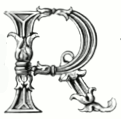Biography

 ichard Westmacott Jr., sometimes called Richard Westmacott III (1799-1872), was the eldest of the eight children of Sir Richard Westmacott, and the most important of the third generation of sculptors in the family (see Sullivan). After attending Ealing School he was persuaded to follow in his father's footsteps instead of entering the law, and studied at the Royal Academy Schools before spending six years in Italy in further study of "ancient sculpture and its history" (Dodgson). This would give him the material for his much later Handbook of Sculpture, Ancient and Modern (1864). Long before that appeared, however, he had become a well-known sculptor in his own right, as well as a respected lecturer and critic in this field.
ichard Westmacott Jr., sometimes called Richard Westmacott III (1799-1872), was the eldest of the eight children of Sir Richard Westmacott, and the most important of the third generation of sculptors in the family (see Sullivan). After attending Ealing School he was persuaded to follow in his father's footsteps instead of entering the law, and studied at the Royal Academy Schools before spending six years in Italy in further study of "ancient sculpture and its history" (Dodgson). This would give him the material for his much later Handbook of Sculpture, Ancient and Modern (1864). Long before that appeared, however, he had become a well-known sculptor in his own right, as well as a respected lecturer and critic in this field.
Westmacott was elected to full membership of the Royal Academy in 1849, and succeeded his father as Professor of Sculpture at the Royal Academy in 1857. His comments on the more recent statuary in Westminster Abbey, in a paper he read in the Henry VII Chapel there in July 1866, support the description of his genius as being "of a graver character" than his father's (qtd. in Sullivan). He found the figures of public men in different attitudes — making speeches, sitting looking thoughtful etc. — sometimes in their ordinary everyday "coats, waistcoats, and breeches," quite jarring in that context. "In none of these is there the slightest idea of fitness or propriety, with reference to place" he submitted (216), and it would be better all round if they were moved to a cloister or the Chapter House. Among all his scholarly writings, he also produced Outlines to Illustrate a Moral Allegory Entitled the Fighte of Freewille (1839), for which he designed the eight engravings. It was described in the Literary Gazette as "Replete with sentiment, expression, and delicacy" (qtd. in "Just published...").

Westmacott had some important patrons. For example, the relief of Paolo and Francesca was carved for Henry Petty, Marquess of Lansdowne, in 1838. Generally, he seems to have lacked his father's flair, but his one important public work in the capital, the sculpture on the pediment of the west front of the Royal Exchange, did the family name proud. It drew on his knowledge of classical sculpture, but married it with a contemporary vision of the City of London as divinely sanctioned as a centre of world trade (see Read 215). He continued to exhibit his work regularly, and was responsible for many good portrait busts, including that of his old schoolfriend from Ealing School, John Henry Newman, which was exhibited in 1841, and is now in the Birmingham Oratory. Of his memorials and funerary monuments, perhaps the most striking is his Franklin Memorial at the Royal Naval College Chapel, Greenwich. Westmacott married and had several children (see Dodgson), but, in the sculptural world at least, there was no Richard Westmacott IV. — Jacqueline Banerjee
Works
- Sir John Franklin Memorial
- Bluebell
- Paolo and Francesca
- Pediment sculpture of the Royal Exchange
- Memorial Plaque to James Smith, Vice Principal, Brasenose College
- The font at George Gilbert Scott's St Mary's Church, Stoke Newington
Bibliography
"Death of Professor Westmacott." Manchester Times. 27 April 1872: 136. 19th Century British Newspapers (British Library). Web. 27 May 2015.
Dodgson, Campbell, rev. Marie Busco. "Westmacott, Richard (1799–1872), sculptor." Oxford Dictionary of National Biography. Online ed. Web. 27 May 2015.
"Just published...."Art-Union, Vol.I. December 1839: 188.
Read, Benedict. Victorian Sculpture. New Haven: Yale University Press, 1982.
Sullivan, M. G. "Details of Sculptor." A Biographical Dictionary of Sculptors in Britain, 1660-1851 (Henry Moore Foundation). Web. 27 May 2015.
Westmacott, Richard. "On the Sculpture in Westminster Abbey." Old London: Papers Read at the London Congress. London: John Murray, 1867. 159-217. Internet Archive. Contributed by the University of California Libraries. 27 May 2015.
Last modified 26 February 2020